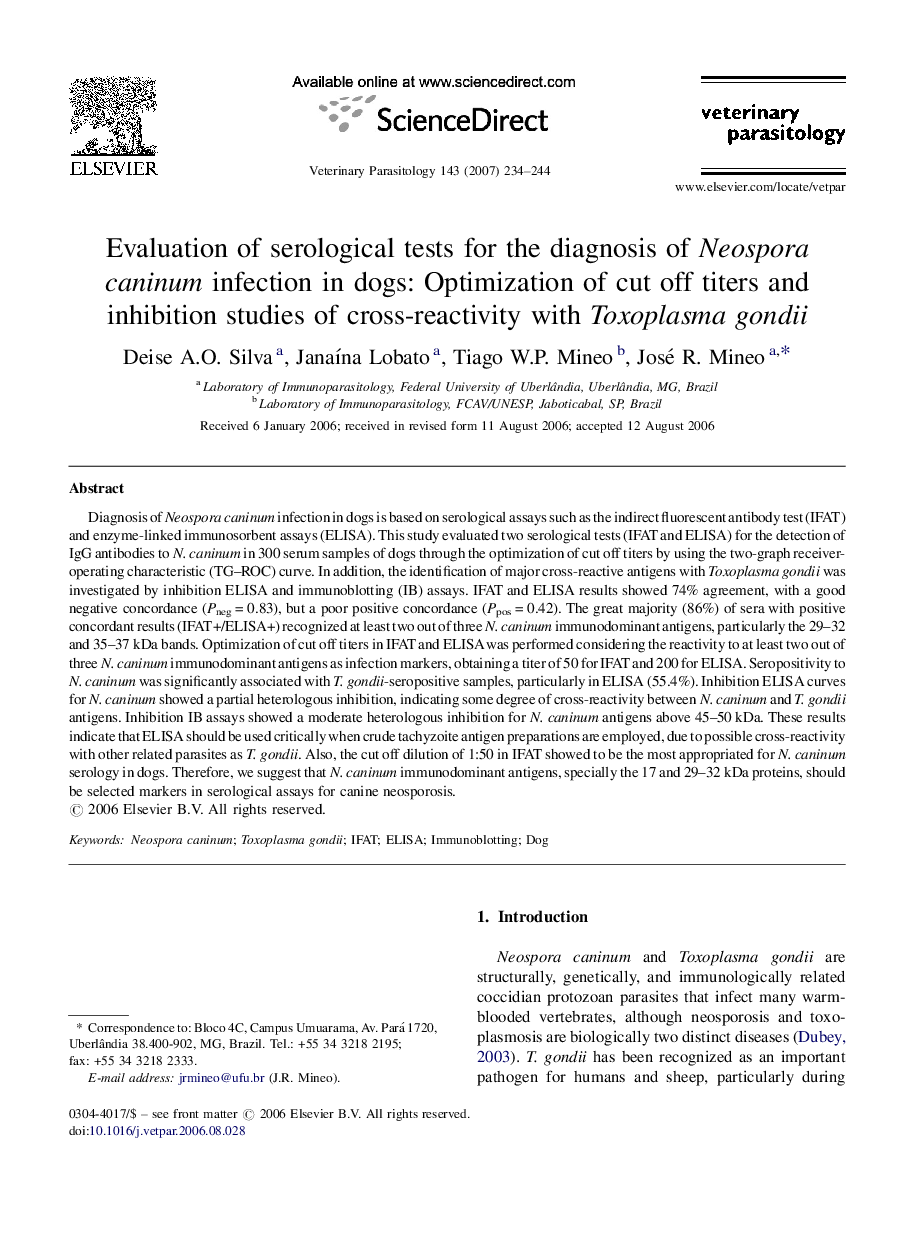| Article ID | Journal | Published Year | Pages | File Type |
|---|---|---|---|---|
| 2472087 | Veterinary Parasitology | 2007 | 11 Pages |
Diagnosis of Neospora caninum infection in dogs is based on serological assays such as the indirect fluorescent antibody test (IFAT) and enzyme-linked immunosorbent assays (ELISA). This study evaluated two serological tests (IFAT and ELISA) for the detection of IgG antibodies to N. caninum in 300 serum samples of dogs through the optimization of cut off titers by using the two-graph receiver-operating characteristic (TG–ROC) curve. In addition, the identification of major cross-reactive antigens with Toxoplasma gondii was investigated by inhibition ELISA and immunoblotting (IB) assays. IFAT and ELISA results showed 74% agreement, with a good negative concordance (Pneg = 0.83), but a poor positive concordance (Ppos = 0.42). The great majority (86%) of sera with positive concordant results (IFAT+/ELISA+) recognized at least two out of three N. caninum immunodominant antigens, particularly the 29–32 and 35–37 kDa bands. Optimization of cut off titers in IFAT and ELISA was performed considering the reactivity to at least two out of three N. caninum immunodominant antigens as infection markers, obtaining a titer of 50 for IFAT and 200 for ELISA. Seropositivity to N. caninum was significantly associated with T. gondii-seropositive samples, particularly in ELISA (55.4%). Inhibition ELISA curves for N. caninum showed a partial heterologous inhibition, indicating some degree of cross-reactivity between N. caninum and T. gondii antigens. Inhibition IB assays showed a moderate heterologous inhibition for N. caninum antigens above 45–50 kDa. These results indicate that ELISA should be used critically when crude tachyzoite antigen preparations are employed, due to possible cross-reactivity with other related parasites as T. gondii. Also, the cut off dilution of 1:50 in IFAT showed to be the most appropriated for N. caninum serology in dogs. Therefore, we suggest that N. caninum immunodominant antigens, specially the 17 and 29–32 kDa proteins, should be selected markers in serological assays for canine neosporosis.
